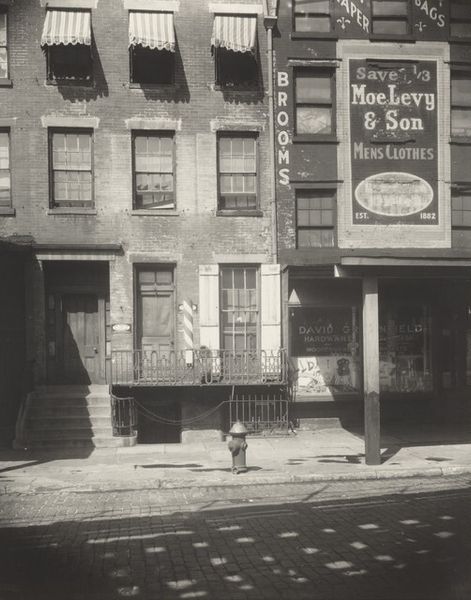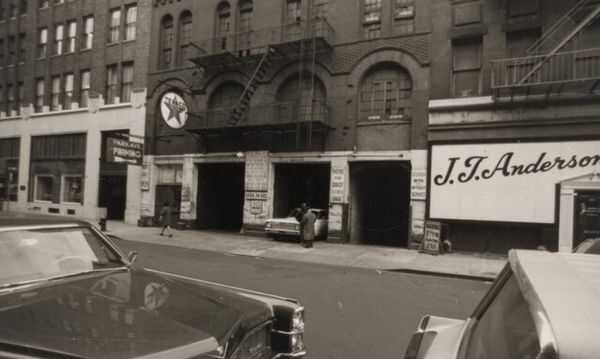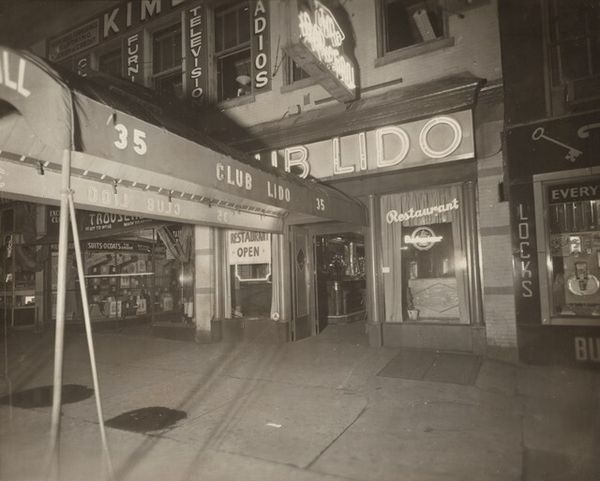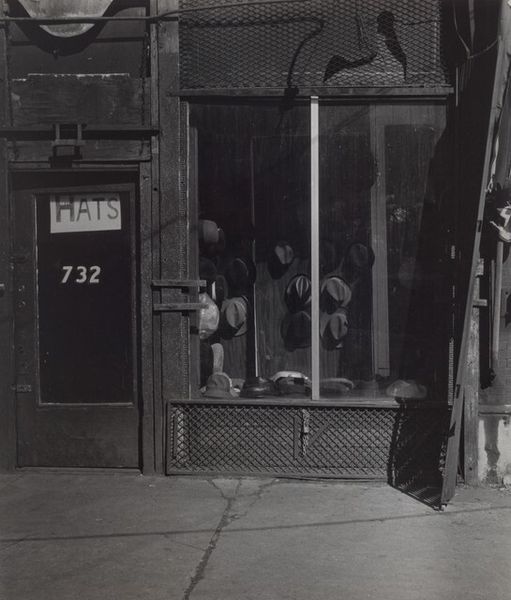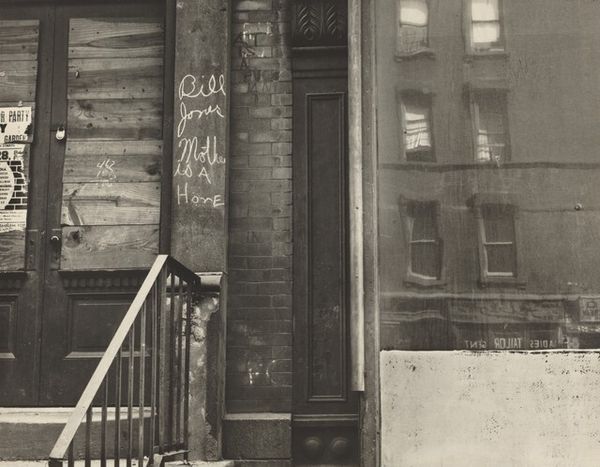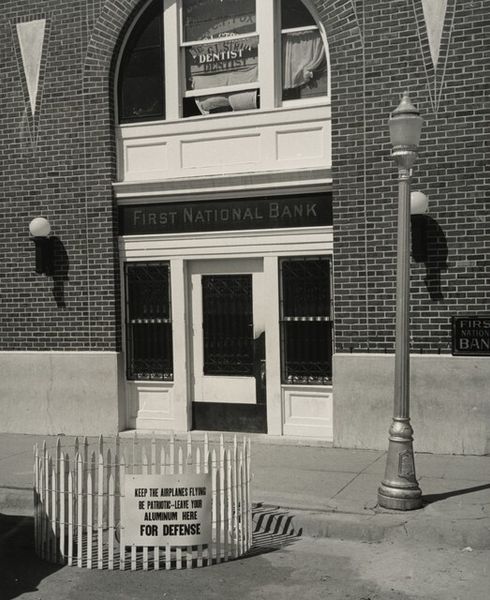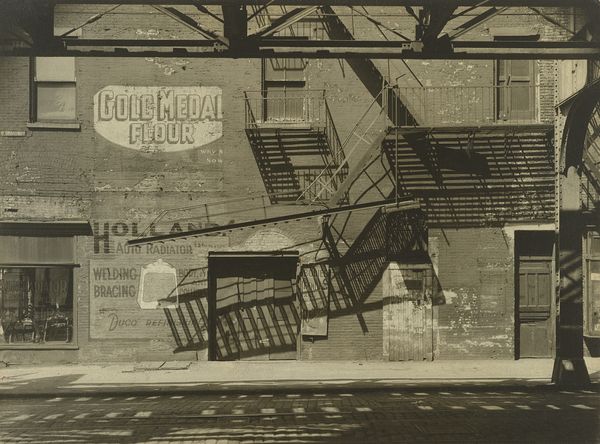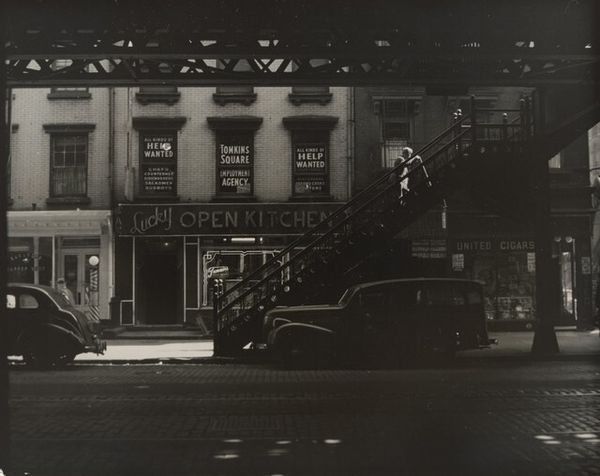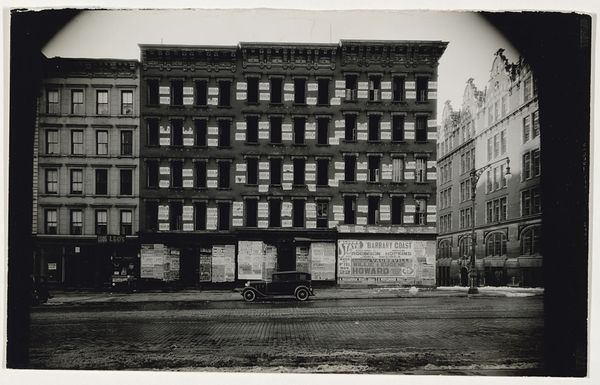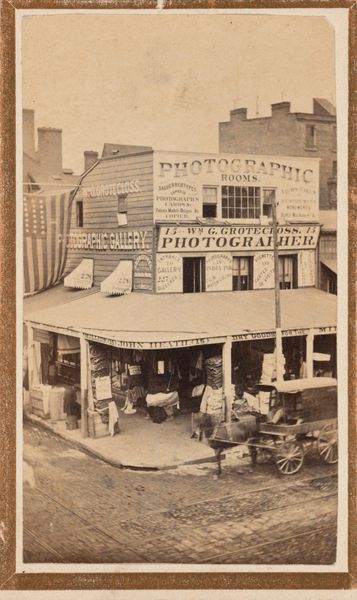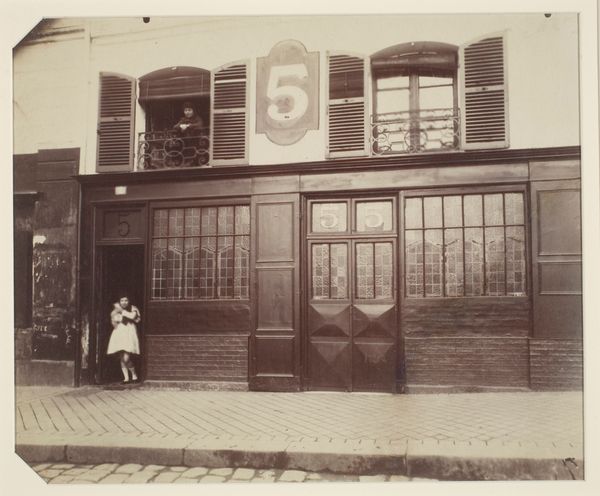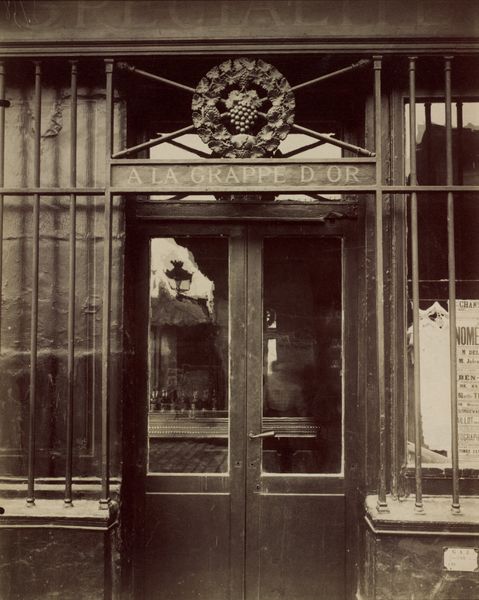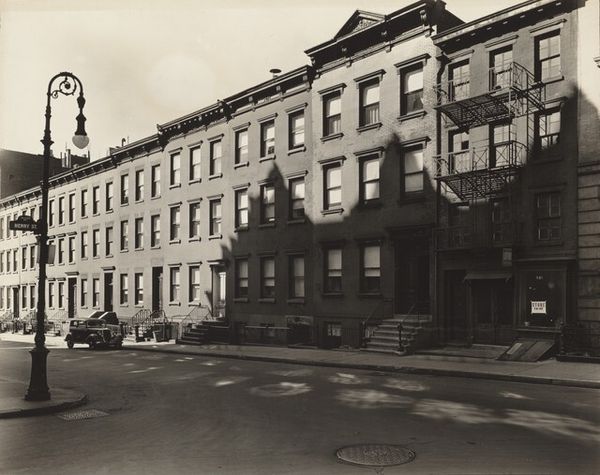
photography
#
portrait
#
street-photography
#
photography
#
monochrome photography
#
ashcan-school
#
cityscape
#
monochrome
Dimensions: image: 16.5 × 23.2 cm (6 1/2 × 9 1/8 in.) sheet: 20.2 × 25.2 cm (7 15/16 × 9 15/16 in.)
Copyright: National Gallery of Art: CC0 1.0
Editor: So, this is James Van Der Zee's "Capital Grill Restaurant," taken around 1940. It's a black and white photograph of a restaurant facade, and I'm immediately struck by all the textures. From the brickwork to the glass signs, there's so much detail. What's your take on this, considering its materials? Curator: For me, this image speaks volumes about the democratization of photography. Van Der Zee wasn't just documenting the elite; he was capturing everyday life, using accessible materials. This photograph on likely silver gelatin print reveals the meticulous labor invested not only in creating the image but in crafting the restaurant's very facade. Consider the tiled base and the signage etched into the glass; each signifies specific craftsmanship. The materials themselves aren’t particularly precious, yet they point to the larger network of production and consumption defining the social fabric of the time. Editor: I hadn't really thought about it that way, focusing on the materials themselves as social indicators. It's more than just a snapshot; it's about how it was made, what it’s made of, and why those choices mattered. Do you think the monochrome palette contributes to this materialist reading? Curator: Absolutely. While color photography existed, black and white was still dominant, partially due to accessibility and cost. Van Der Zee using this medium reinforces that connection to the everyday and the working class. It forces us to look closer at texture, form, and content rather than being seduced by superficial color. Look, what labor was involved in creating such an aesthetic out of these simple choices? Editor: So, by analyzing the materials and production process of the image, as well as the materiality of the restaurant itself, we gain a deeper understanding of the cultural and economic context? Curator: Precisely. It challenges the idea that only 'high art' made of precious materials is worthy of critical attention. This photo asks us to examine the value and labor embedded within these everyday scenes and commonplace materials. Editor: That's a fascinating way to look at it! It changes how I see photography and the stories it can tell about the materials all around us.
Comments
No comments
Be the first to comment and join the conversation on the ultimate creative platform.
